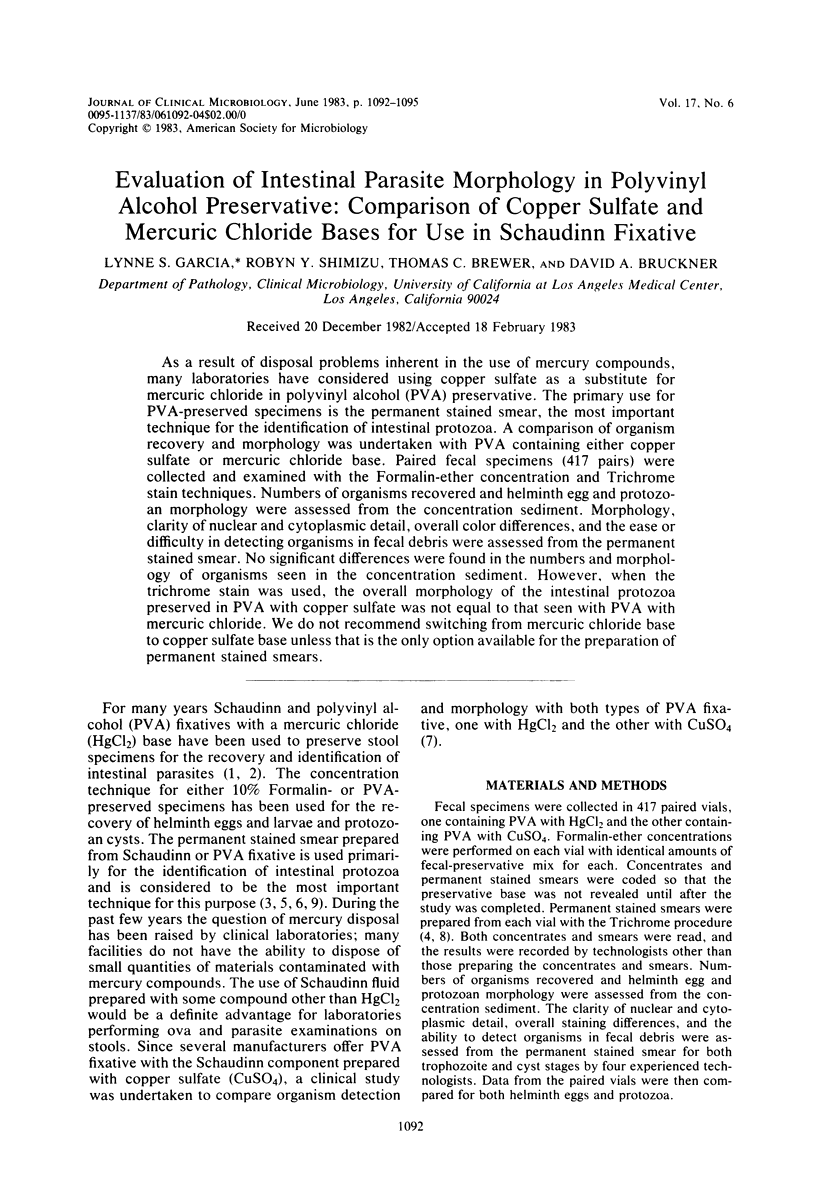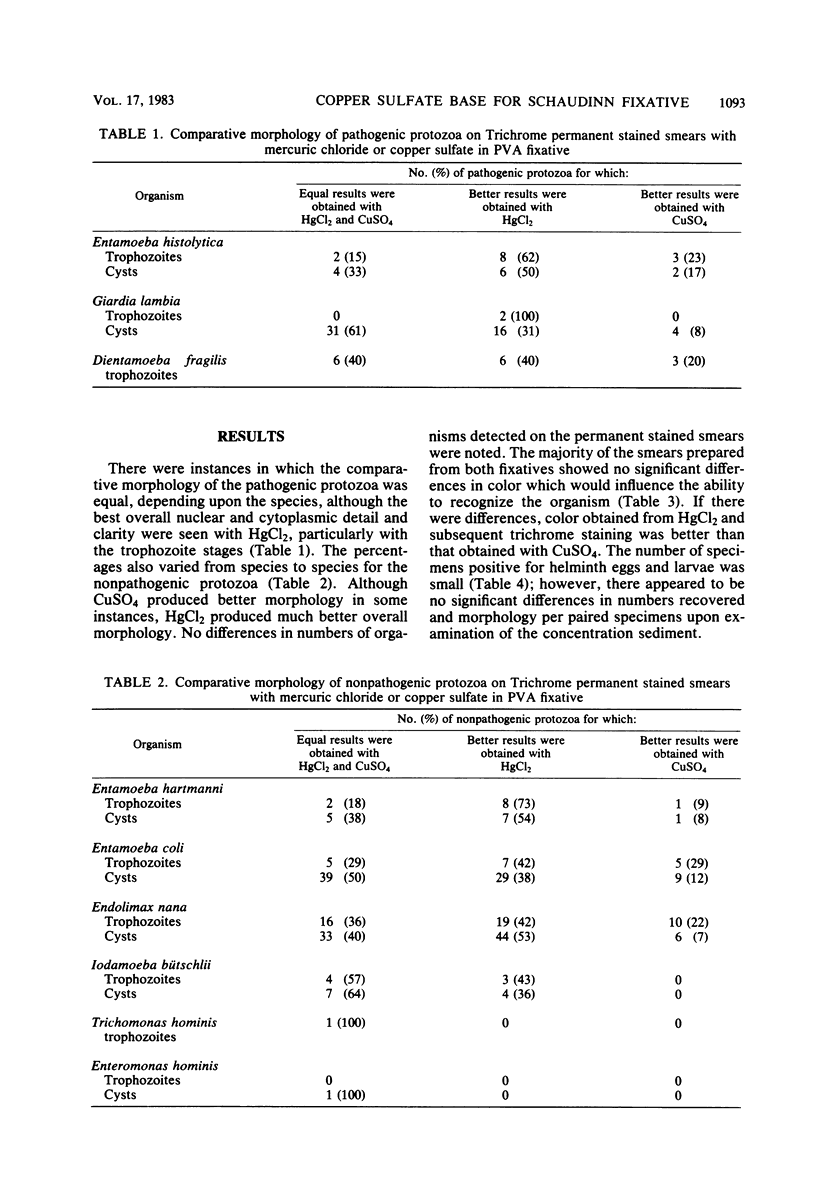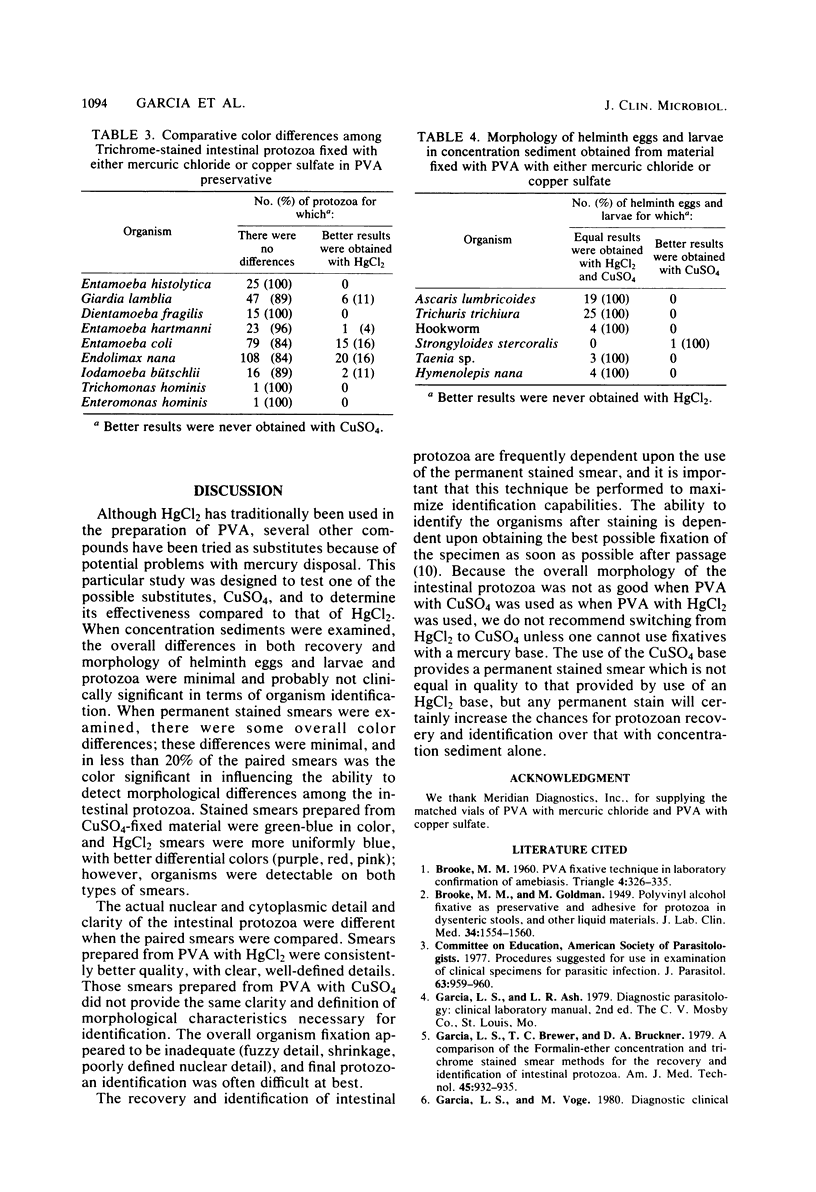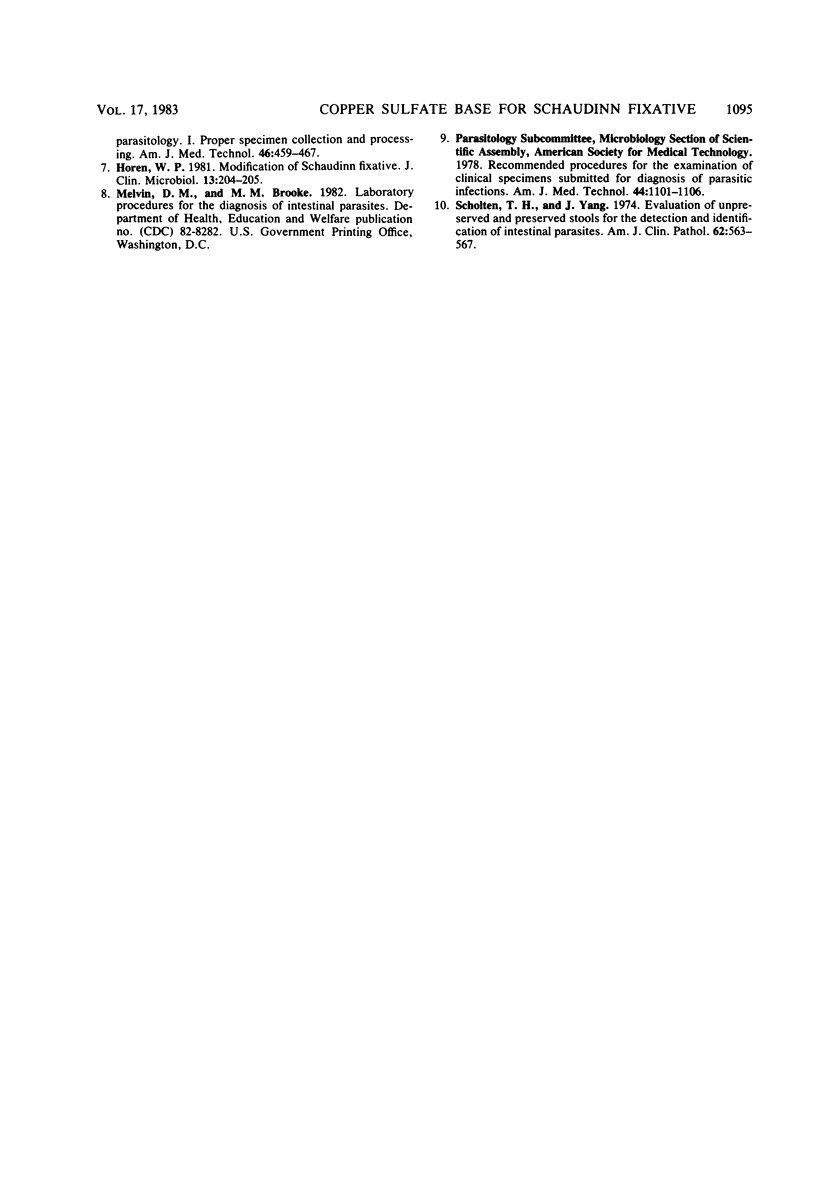Abstract
As a result of disposal problems inherent in the use of mercury compounds, many laboratories have considered using copper sulfate as a substitute for mercuric chloride in polyvinyl alcohol (PVA) preservative. The primary use for PVA-preserved specimens is the permanent stained smear, the most important technique for the identification of intestinal protozoa. A comparison of organism recovery and morphology was undertaken with PVA containing either copper sulfate or mercuric chloride base. Paired fecal specimens (417 pairs) were collected and examined with the Formalin-ether concentration and Trichrome stain techniques. Numbers of organisms recovered and helminth egg and protozoan morphology were assessed from the concentration sediment. Morphology, clarity of nuclear and cytoplasmic detail, overall color differences, and the ease or difficulty in detecting organisms in fecal debris were assessed from the permanent stained smear. No significant differences were found in the numbers and morphology of organisms seen in the concentration sediment. However, when the trichrome stain was used, the overall morphology of the intestinal protozoa preserved in PVA with copper sulfate was not equal to that seen with PVA with mercuric chloride. We do not recommend switching from mercuric chloride base to copper sulfate base unless that is the only option available for the preparation of permanent stained smears.
Full text
PDF



Selected References
These references are in PubMed. This may not be the complete list of references from this article.
- Garcia L. S., Brewer T. C., Bruckner D. A. A comparison of the formalin-ether concentration and trichrome-stained smear methods for the recovery and identification of intestinal protozoa. Am J Med Technol. 1979 Nov;45(11):932–935. [PubMed] [Google Scholar]
- Garcia L. S., Voge M. Diagnostic clinical parasitology: I. Proper specimen collection and processing. Am J Med Technol. 1980 Jun;46(6):459–466. [PubMed] [Google Scholar]
- Horen W. P. Modification of Schaudinn fixative. J Clin Microbiol. 1981 Jan;13(1):204–205. doi: 10.1128/jcm.13.1.204-205.1981. [DOI] [PMC free article] [PubMed] [Google Scholar]
- Scholten T. H., Yang J. Evaluation of unpreserved and preserved stools for the detection and identification of intestinal parasites. Am J Clin Pathol. 1974 Oct;62(4):563–567. doi: 10.1093/ajcp/62.4.563. [DOI] [PubMed] [Google Scholar]


